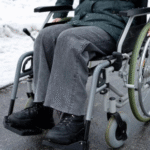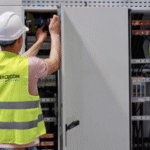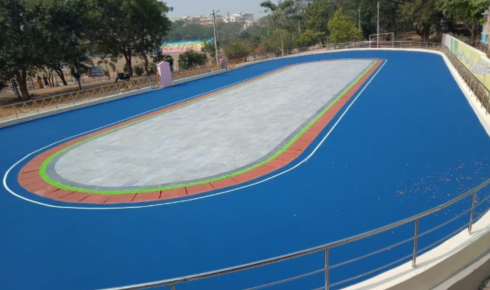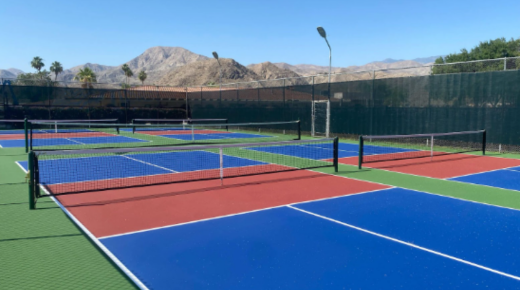The quality of a roller skating experience depends on more than just skates—it’s built from the ground up, starting with the surface. Whether it’s a competitive arena or a school playground, choosing the right roller skating rink surface is essential for safety, speed, and performance.
From casual recreation to professional skating, the flooring must offer grip, smoothness, and resilience to support every stride. This blog explores the most reliable skating rink flooring materials, and why acrylic roller skating surfaces are becoming the gold standard for courts across India.
Why Surface Quality Is Crucial in Skating Courts
A well-designed roller skating rink floor provides the right mix of grip and glide, allowing skaters to move smoothly while maintaining control. It absorbs impact, supports safe stopping, and enables precise maneuvers like quick turns, spins, and sudden directional changes. On the other hand, uneven or poorly surfaced rinks can lead to accidents, reduced performance, excessive wheel wear, and even long-term injuries.
Beyond performance, the surface also plays a crucial role in the court’s lifespan and maintenance costs. Subpar materials may degrade quickly under pressure and weather exposure—leading to frequent resurfacing or costly repairs. In contrast, a high-quality surface built with the right skating rink flooring materials ensures not only safety but also durability, aesthetic appeal, and lower upkeep.
For institutions like schools, academies, and public sports facilities, investing in a premium skating court surface isn’t just about function—it’s a long-term value addition. It reflects professionalism, attracts more users, and supports competitive-level training and events.
What Are the Best Skating Rink Flooring Materials?
When choosing flooring for a roller skating rink, planners typically choose from four main types of surfaces. Each has its own characteristics, maintenance needs, and suitability depending on whether the court is indoors or outdoors.
- Acrylic Roller Skating Surfaces
These synthetic surfaces are layered on concrete or asphalt bases and deliver superior performance. They are weatherproof, UV resistant, and slip-resistant. Acrylic coatings are also customizable in terms of color and finish. Widely used in Indian climates, they offer long life, minimal maintenance, and professional-grade play quality. - Plain Concrete or Asphalt
While these surfaces are durable and cost-effective, they are not ideal on their own for skating. The raw texture of concrete can be abrasive and dangerous without a proper top coating. Many rinks use these as sub-bases before applying acrylic layers. - Wooden Flooring
Popular in indoor skating arenas—especially for artistic skating—wood offers smoothness and a classic feel. However, it is highly sensitive to moisture, making it unsuitable for outdoor use. It also requires regular maintenance to prevent warping, damage, or loss of finish. - Modular Interlocking Tiles
These plastic or rubber tiles are easy to install, replace, and transport. They’re ideal for temporary setups or indoor use. However, for high-speed or advanced skating, the gaps between tiles may disrupt movement and reduce performance consistency.
Among these, acrylic roller skating rink surfaces strike the best balance between durability, affordability, aesthetics, and performance—especially for India’s mixed outdoor use cases.
Why Acrylic is the Ideal Surface for Skating Courts
Among the different skating rink flooring materials, acrylic stands out as a high-performance, multi-functional solution. It is especially suitable for Indian conditions, where high temperatures, seasonal rains, and dust can affect conventional flooring.
Acrylic roller skating rink surfaces are made by applying multiple layers of synthetic coating over a prepared concrete or asphalt base. These coatings provide a textured, non-slip surface that ensures proper grip for wheels while maintaining smoothness for easy motion. Acrylic is engineered to resist UV damage, water penetration, surface cracks, and discoloration—common problems in uncoated or wooden surfaces.
What sets acrylic roller skating courts apart is their ability to blend performance with practicality:
- Weatherproof Durability: Unlike wood or tiles, acrylic doesn’t swell, crack, or warp due to temperature or moisture changes. This ensures low maintenance and long lifespan.
- Consistent Surface Texture: Skaters enjoy uniform resistance across the court, which boosts training efficiency and reduces fall risk.
- Custom Line Markings and Branding: Acrylic surfaces are paint-friendly, allowing you to add vibrant line markings for competition zones, training grids, or aesthetic designs.
- Eco-Friendly and Low Maintenance: Acrylic coatings are non-toxic, and cleaning requires minimal water or chemicals.
Whether you’re building a rink for leisure or sport, acrylic ensures a consistent experience—allowing skaters to focus on their form, technique, and speed without being distracted or endangered by surface issues. It’s no surprise that many new and renovated roller skating rinks in India are turning to this robust and visually striking material.
Final Thoughts
A great roller skating rink starts with a thoughtfully selected surface. In India, where versatility and weather resistance are key, acrylic roller skating surfaces outperform traditional options. They’re safer, longer-lasting, and aesthetically pleasing—making them the preferred choice for schools, municipalities, and private sports developers.
Whether you’re resurfacing an old rink or starting from scratch, don’t compromise on flooring quality. Your choice of roller skating rink flooring materials can shape the safety, longevity, and joy of every skating experience.










